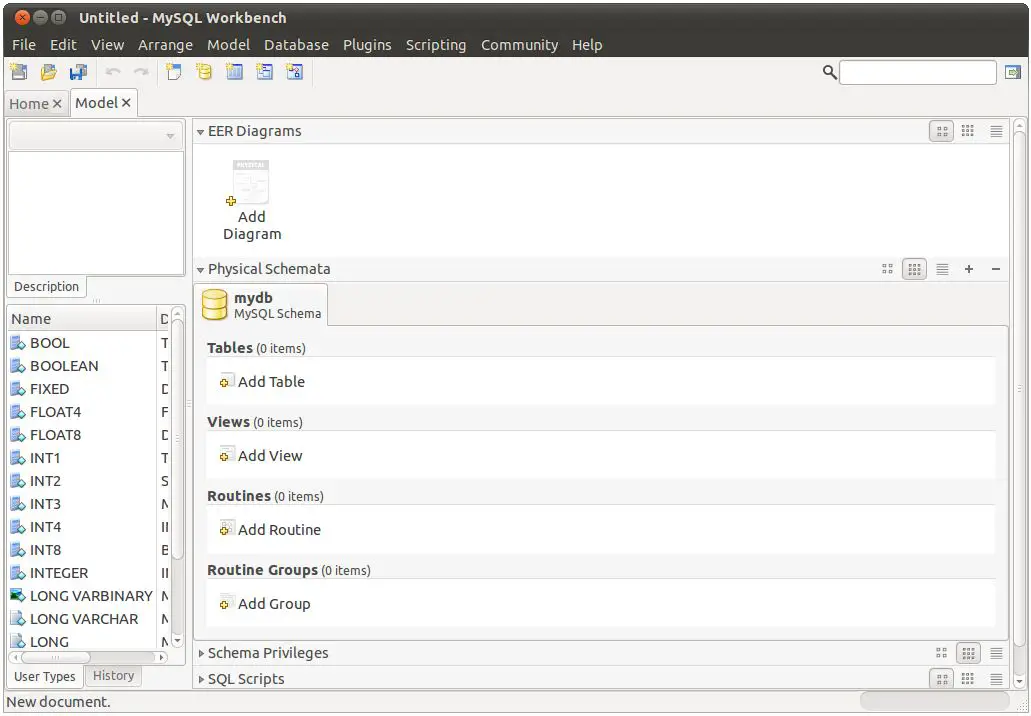

Mysql workbench foreign key update#
However, it won’t allow you to insert or update data that violate the foreign key constraint. For example any string data will be imported as text datatype 2. Since the film_id field is part of the primary key in the film_actor table, a solid line is used for the connector between the two tables. When the foreign key checks re-enabled, MySQL did not re-validate data in the table. when you import data MySQL tends to make it as generic as possible. The film and theįilm_actor tables are related on the film_id field and these fields are highlighted in both tables. Pausing your mouse pointer over a relationship connector highlights the connector and the related keys as shown in the following figure.

To edit the properties of a foreign key, double-click anywhere on the connection line that joins the two tables. Use the menu, menu item to set a project-specific default name for the foreign key column (see Section 9.1.1.1.5.4, “The Relationship Notation Submenu”). For this tool to function there must be a primary key defined in the initial When the many-to-many tool is active, double-clicking a table creates an associative table with a many-to-many relationship. The default name of this column is table_name_key_name where the table name and the key name both refer to the table containing the referenced key. This creates a column in the table on the many side of the relationship. The relationship, then on the table containing the referenced key. If you are creating a one-to-many relationship, first click the table that is on the “ many” side of Click on the appropriate tool for the type of relationship you wish to create. Ensure that there is a primary key in the table that will be on the “ one” side of the relationship.


Relationship: identified by a broken (dashed) line between tablesĬreate or drag and drop the tables that you wish to connect. In such cases, the primary key is usually a composite key made up of the primary keys from the two original tables. Typically this occurs where an intermediary table is created to resolve a many-to-many relationship. Localhost should establish a connection and giving an info over the logs.Identifying relationship: identified by a solid line between tablesĪn identifying relationship is one where the child table cannot be uniquely identified without its parent. Error: Duplicate foreign key constraint name ‘fk_groups_groupid’ 15:21:41 INFO: Successfully released change log lock 15:21:41 ERROR: Main method error - Duplicate foreign key constraint name ‘fk_groups_groupid’ - SQLException (… < DataManager:312 < *:90 < Context:292 < Main:110 < …) 15:21:41 WARN: JNA: Callback threw the following exception - Duplicate foreign key constraint name ‘fk_groups_groupid’ - SQLException (… < DataManager:312 < *:90 < Context:292 < Main:110 < …) 15:21:40 ERROR: Change Set changelog-4.0-clean::changelog-4.0-clean-common::author failed. I did find out the table from the schema and foreign key linked with it, I have checked the other similar tables created also but no other tables has the same foreign key. Looking on the 'DDL' tab it clearly shows FK constraints against the table, but as per original poster there is simply a blank 'Foreign Keys' tab.
Mysql workbench foreign key upgrade#
I’ll attach the piece of error from the log here. We experienced this problem when using Workbench 8.0.19 and were hoping the upgrade to workbench 8.0.22 would address the issue but are sad that it has not. I checked log files for the error and I was shown an error which I assume is related to foreign key but still I cannot get the solution for it. I have linked my MySQL Workbench with Traccar and tables are being stored over it, recently I faced an issue due to which I think localhost is not establishing a connection and showing me error LocalHost refused to connect. / Adding Foreign Key Relationships Using an EER Diagram 9.1.4.


 0 kommentar(er)
0 kommentar(er)
